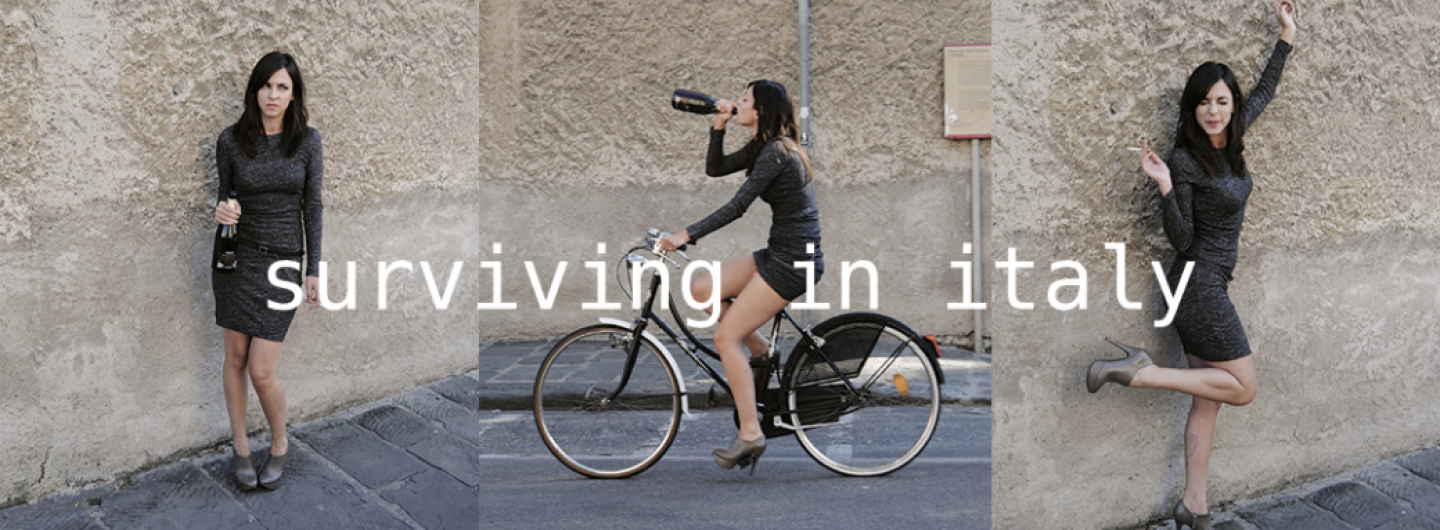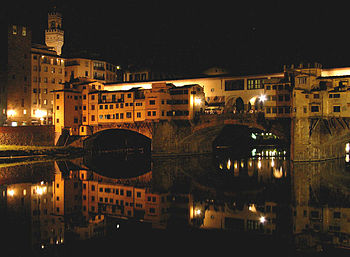1. “In 1339, Florence became the first city in Europe with paved streets(nileguide.com).”
They were so proud of this achievement that they’ve decided to never change the originals. But in all seriousness, some of the sidewalks and streets in the historic center are hand-chiseled. Yes, seriously, I’ve seen pudgy workers sitting on the ground chiseling out the little grooves in the sidewalks and streets. How does one become the town chiseler?
2. “Florence was home to the infamous Medici family from the 14th century to the 18th century. Leonardo da Vinci, Niccolo Machievelli, Galileo Galilei, Amerigo Vespucci, Donatello, Raffaele, Roberto Cavalli, and Guccio Gucci, fashion designer and Gucci fashion was founded in Florence 1921 (nileguide.com).”
Essentially, Florence has always had a wild, and thriving, LGBT community.

English: Self-portrait of Leonardo da Vinci. Red chalk. 33 × 21 cm. Turin, (Photo credit: Wikipedia)
3. “Florence was established by Lucius Cornelius Sulla in 80 BC as a settlement for his veteran soldiers and was named originally Fluentia, owing to the fact that it was built between two rivers, which was later corrupted to Florentia (wikipedia.com).”
Probably on purpose when they realized that Fluentia sounded like a disease.
4. “In 1944, the retreating Germans blew up the bridges along the Arno linking the district of Oltrarno to the rest of the city, making it difficult for the British troops to cross. However, at the last moment Charle Steinhauslin, at the time consulate of 26 countries in Florence, convinced the German general in Italy that the Ponte Vecchio was not to be blown up due to its historical value(wikipedia.com).“
They saved the bridge for it’s historical value, then skipped over to Santa Spirito and shot a bunch of Americans, Englishmen, and Italians in the face. In times of war, jewelry wins!
5. “In 2013, Florence was listed as the second best world city by Condé Nast Traveler.”
It’s a pretty great city but I’m not actually sure what that means. Best overall? Best for tripe? Poetry? Life? Pretty cool though.
6. “Florentine (fiorentino), spoken by inhabitants of Florence and its environs, is a Tuscan dialect and the immediate parent language to modern Italian. Its vocabulary and pronunciation are largely identical to standard Italian, though the hard c [k] between two vowels (as in ducato) is pronounced as a fricative[h], similar to an English h. This gives Florentines a highly recognizable accent (the so-called gorgia toscana). Other traits include using a form of the subjunctive mood last commonly used in medieval times, a frequent usage in everyday speech of the modern subjunctive, and a shortened pronunciation of the definite article, [i] instead of “il”. (wikipedia.com).“
What wikipedia is trying to say, is that you should substitute an “H” sounds where a “C” or “k” would go. Also, speak like you’re at a medieval festival: My dear maiden, ye me passeth a Hoha-Hola, for I am parched and I liketh very much the soda. Sort of.
7. “Calcio Storico Fiorentino (“Historic Florentine Football”), sometimes called Calcio in costume, is a traditional sport, regarded as a forerunner of soccer, though the actual gameplay most closely resembles rugby. The event originates from the Middle Ages, when the most important Florentine nobles amused themselves playing while wearing bright costumes. The game is played in the Piazza di Santa Croce. A temporary arena is constructed, with bleachers and a sand-covered playing field. A series of matches are held between four teams representing each quartiere (quarter) of Florence during late June and early July.There are four teams: Azzurri (light blue), Bianchi (white), Rossi (red) and Verdi (green). The Azzurri are from the quarter of Santa Croce, Bianchi from the quarter of Santo Spirito, Verdi are from San Giovanni and Rossi from Santa Maria Novella (wikipedia.com).“
Imagine recently incarcerated hockey players, playing soccer, wearing clown pants. It’s the “manliest” of sports if by manly you mean sweaty. It’s my favorite event in Florence. You should go.

English: Calcio Storico – 24.06.2008 – Azzurri Vs. Rossi Italiano: Calcio Storico – 24.06.2008 – Azzurri Vs. Rossi (Photo credit: Wikipedia)
8. “Opera was invented in Florence in the late 16th century(wikipedia.com).“
This doesn’t surprise me. I lived downstairs from three opera singers in Campo who attended the opera school once. It was possibly the most musical/irritating year of my life. I know you’re thinking, “Opera! Upstairs! So romantic and fun!” Totally, until they sing the same song over, and over again, every day, for months.
9. “Florence is a major production and commercial centre in Italy, where the Florentine industrial complexes in the suburbs produce all sorts of goods, from furniture, rubber goods, chemicals, and food. However, traditional and local products, such as antiques, handicrafts, glassware, leatherwork, art reproductions, jewelry, souvenirs, elaborate metal and iron-work, shoes, accessories and high fashion clothes also dominate a fair sector of Florence’s economy(wikipedia.com).”
And now, as the EU allows, Italy can also include prostitution and illegal drug smuggling into their GDP figures. This will make Novelli, and its many street hookers, fiscal “ballers”.
10. “In 1817, French author Henri Stendhal staggered around the streets of Florence emotionally overwhelmed at the aesthetic beauty of the city. His symptoms of dizziness, palpitations and panic attacks on seeing so many exquisite works of art gave rise to the condition, medically diagnosed as recently as 1982, known as Stendhalismo (simonseek.com).”
This reminds me of my dog, Oliver. When he gets really excited to see something, he pees himself. What I wouldn’t give for that much excitement over anything, right?

